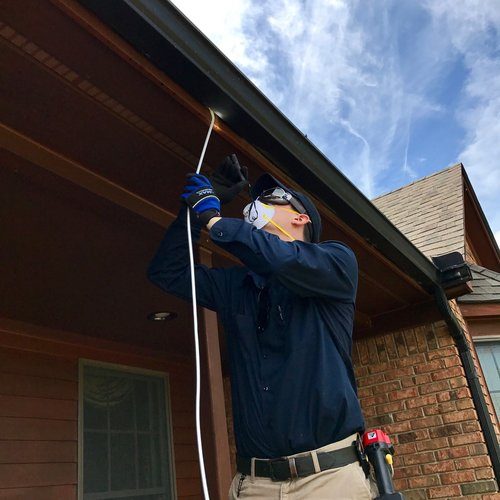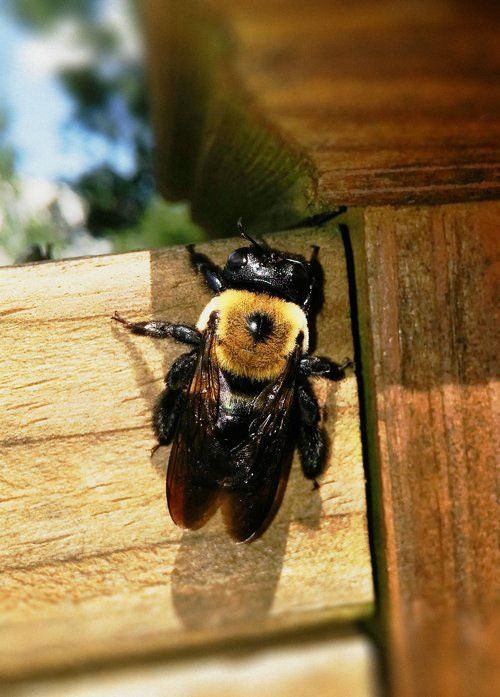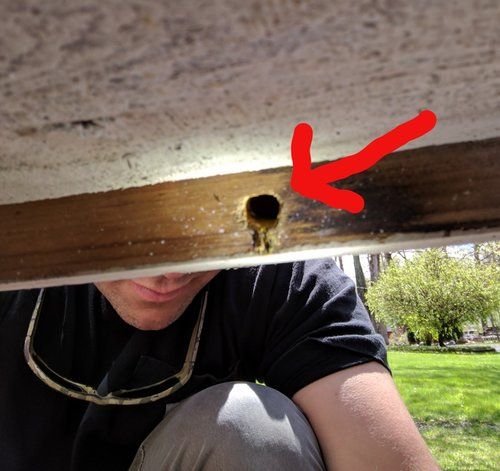Our Carpenter Bee Removal Services Are Quite the Buzz
Carpenter bees are drawn to our homes and often try to make them their new homes, too. If your home or business has become susceptible to the sting of bees, Wingman will bail you out. Here is our three-step approach for targeting and eliminating carpenter bees.
Step 1:
During the first visit, our goal is to get the bees under control. We use electronically calibrated equipment to apply safe and effective carpenter bee pesticide dust that neutralizes them. We go straight to the source, applying material directly inside the holes where the carpenter bees are living. We will also apply product to the surrounding area to protect from bees from chewing on the wood in the future.

Step 2:
Once we apply our product, we wait a little while it to take effect and for the carpenter bees to carry it deep into their nests. This helps to ensure that no larvae survive.

Step 3:
Sealing the carpenter bee holes keeps moisture out of the wood and helps us determine whether to reapply the treatment. If the bees are still alive, they’ll chew out the caulk, which means another treatment is needed.
